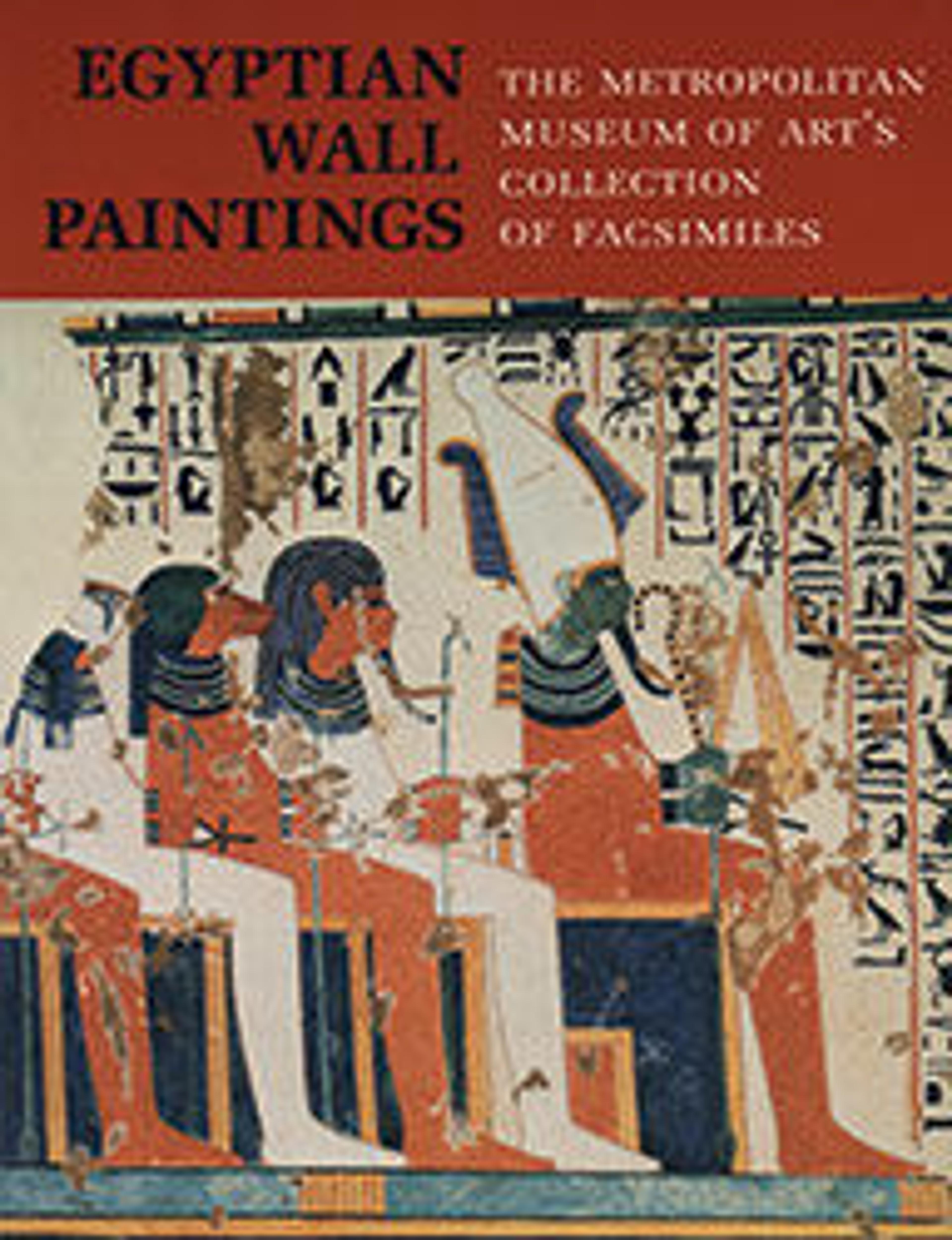Women at a Banquet
This detail of a banquet scene shows a female guest offering another guest a yellow mandrake fruit, which the ancient Egyptians associated with love and sexuality. The fruit has a pleasing smell when ripe, while the mandrake plant itself has hallucinogenic and aphrodisiac effects but is toxic. Several lotus flowers are also depicted. Each headband features a lotus bud, and two guests hold a lotus flower; one is open (though partially destroyed), and another is closed. The lotus flower, which also has a pleasing scent, was a symbol for regeneration and rebirth because its petals open and close every day. Additionally, the Nymphaea species of lotus has narcotic properties and may have been used to achieve an altered state.
Artwork Details
- Title:Women at a Banquet
- Artist:Nina de Garis Davies (1881–1965)
- Period:Twentieth Century; original New Kingdom
- Dynasty:Dynasty 18
- Reign:probably reign of Thutmose IV
- Date:A.D. 1922; original ca. 1400–1390 B.C.
- Geography:Original from Egypt, Upper Egypt, Thebes, Sheikh Abd el-Qurna, Tomb of Nebseny (TT 108), MMA Graphic Section, 1922
- Medium:Tempera on paper
- Dimensions:facsimile: h. 29.5 cm (11 5/8 in); w. 58 cm (22 13/16 in), scale 1:1; framed: h. 33 cm ( 13 in); w. 61 cm (24 in)
- Credit Line:Rogers Fund, 1930
- Object Number:30.4.92
- Curatorial Department: Egyptian Art
More Artwork
Research Resources
The Met provides unparalleled resources for research and welcomes an international community of students and scholars. The Met's Open Access API is where creators and researchers can connect to the The Met collection. Open Access data and public domain images are available for unrestricted commercial and noncommercial use without permission or fee.
To request images under copyright and other restrictions, please use this Image Request form.
Feedback
We continue to research and examine historical and cultural context for objects in The Met collection. If you have comments or questions about this object record, please contact us using the form below. The Museum looks forward to receiving your comments.
